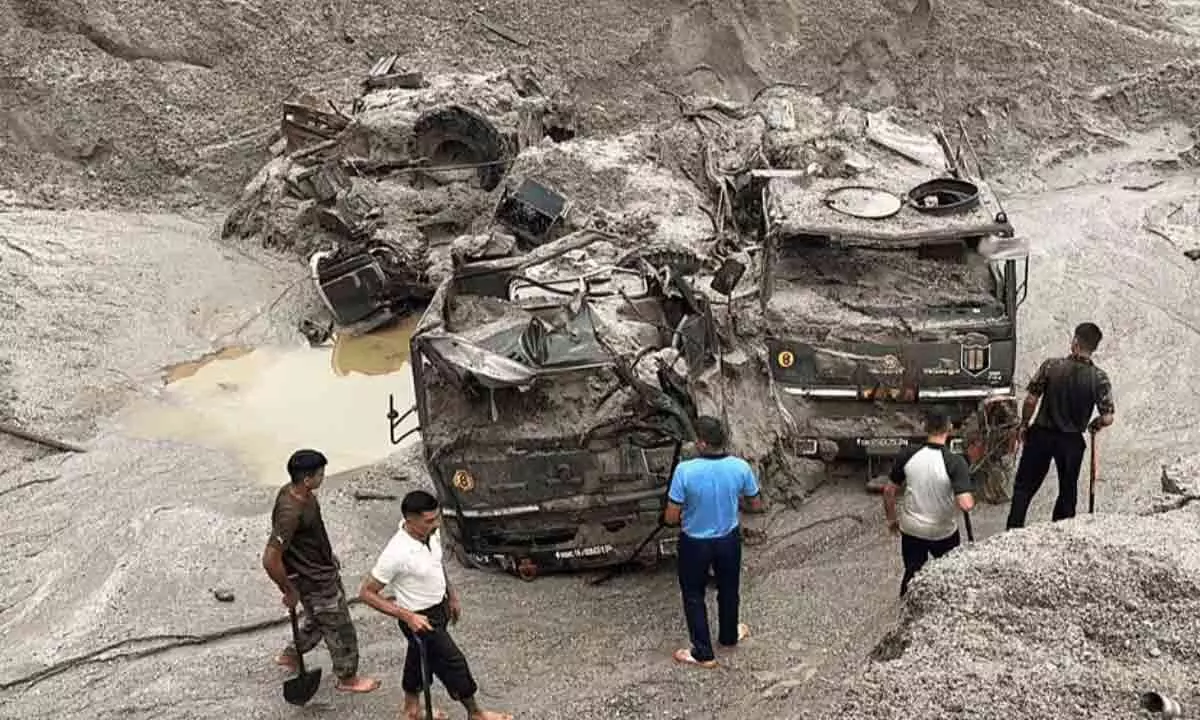Mortal Remains Of Eight Army Personnel Found After Sikkim Flash Floods

- 1. Defence Minister Rajnath Singh announces the recovery of eight Army personnel's remains following flash floods in Sikkim.
- 2. A cloudburst triggered the floods, resulting in significant loss of life.
In a tragic turn of events, the mortal remains of eight Army personnel, who had gone missing following flash floods in Sikkim, were recovered on Saturday, according to a statement by Defence Minister Rajnath Singh. The flash floods were triggered by a cloudburst in Sikkim, which resulted in significant loss of life. Singh expressed his condolences for the lives lost in this natural disaster.
The Defence Minister expressed in a social media post that deeply pained by the tragic loss of precious lives, including eight Army personnel, in the recent flash floods caused by a glacial lake burst in Sikkim.
Out of the 23 soldiers who were reported missing, one has been successfully rescued, while the mortal remains of eight brave soldiers have been recovered. Singh emphasized the sacrifice made by these soldiers while serving in forward areas for the nation, stressing that their dedication will not be forgotten. Search operations are ongoing to rescue the remaining 14 soldiers and missing civilians.
According to the Sikkim State Disaster Management Authority (SSDMA), the death toll stands at 26, with 142 people still missing. The report also reveals that 2,413 individuals have been rescued, and 1,203 houses have been damaged as a result of the flash floods.
Sikkim's Chief Minister, Prem Singh Tamang, attributed the maximum damage from the flash floods along the Teesta River to the breach of the 1,200 MW dam in Chungthang, in the state's Mangan district. He alleged substandard construction work by the previous government in the state. The Chief Minister visited flood-affected areas and relief camps in Naga Village in Mangan to assess the situation and interact with the affected people.
The flash flood disaster was triggered by the bursting of the Lhonak glacier in the Sikkim Himalayas on October 3, leading to a sudden increase in water levels in the Teesta River and the inundation of several areas in the state. In response to the crisis, the Sikkim government has established 18 relief camps in Singtam, Rangpo, Dikchu, and Adarsh Gaon, with the Indian Army and other paramilitary forces setting up additional relief camps in Chungthang due to the lack of connectivity.
















